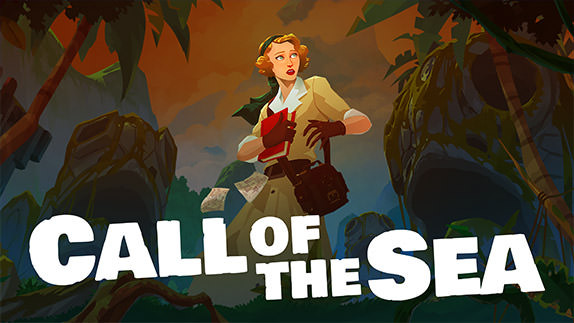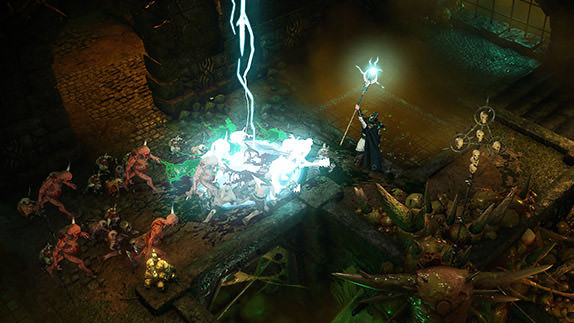Axiom Verge Review

 By Kevin Mitchell | Posted: March 31, 2015
By Kevin Mitchell | Posted: March 31, 2015
Axiom Verge isn't the first game that has been entirely developed by a sole developer, but the story regarding how the game came into fruition is one for the record books. Working at the talented Petroglyph Games as an engineer, Tom Happ created every aspect of the game over the past five years, the majority of which occurred during his time with the company. Working on the game on nights and weekends, an alpha build of the game was originally part of the Dream.Build.Play challenge in 2012.
Since that time, the game has progressed further than I thought was possible, catching the eye of Sony in the process; the game was originally set for a PC and Xbox 360 release. Currently available on PS4, the game will still be coming to PC, but the third pillar will be the PS Vita and not a Microsoft console.
Axiom Verge, a 16-Bit love child of a handful of classic titles, including Castlevania, Metroid, Contra, and a bit of Rygar thrown in for good measure. As you journey through this side-scrolling action-adventure, you'll take on the role of Trace after finding himself in an unknown place. Mysterious giant robots attempt to enlist his help in order to fix their mangled mechanical bodies. As you might expect for a game that resembles one of the greatest games of all-time (Super Metroid), Axiom Verge connects each area in the game together. Each locale is uniquely themed, complete with a new audio track, new dangers, and both new and updated enemies. The first area clearly pays homage to Metroid, with similar looking enemies that encircle floating platforms, and those annoying ones that dive towards you when they are close enough. Even the first weapon you find in the game fires like Samus Aran's Arm Cannon, sans any charging ability.
Unlike many of the games released in the past few years, Axiom Verge lacks any type of hand holding. The lack of directional arrows or waypoints pointing you in the right direction or towards the next objective is refreshing. Across the 11 hours it took to finish (not complete) the game, there were times where I wished I paid more attention to my surroundings. For the uninitiated, Axiom Verge features backtracking to not only collect previously unattainable items or equipment, but certain areas won't be immediately accessible. While making note of these locales on paper may be against the spirit of the game (I'm sure many of you did this for Super Metroid over 20 years ago), I do wish I could remember where I saw certain unobtainable items.
One thing that Axiom Verge is not short on is weapons. There are over 40 different weapons and tools that you'll come across in the game, with all the weapons being easily accessible on the right stick via a weapon wheel. I mean, you acquire four different weapons, all of which are vastly unique, within the first couple hours of the game. The Axiom Disruptor (the first weapon) fires in any of the eight cardinal directions, but most of the other weapons have unique features. The Kilver fires lightning in the shape of a bulb, the perfect choice when close to enemies, but the Reflector can bounce shots off walls, and the Voranj fires multiple beams in randomized paths. My favorite, the Lightning Gun, fires a constant beam of lightning that targets and locks on to foes within range. Certain weapons are better for different encounters, and some are a necessity.
Early on, you'll come across the Laser Drill, capable of busting apart bricks with relative ease. Think of it as the replacement for the bombs in Metroid. The Address Disruptor, also known as the glitch gun, can alter almost every enemy in the game. Too many enemies in your immediate path to platform your way across an area? Experiment with the Address Disruptor. Most of the time, it will benefit you, the player, but there were some moments that make an enemy even deadlier. You'll have to experiment on your own, but don't forget it can transform the landscape as well. A good hint if you are looking to find all of the secret areas.
Puzzles are on the lighter side, with most requiring the use of a specific weapon to flip a switch or require the use of the Laser Drill or the Address Disruptor. If you find yourself unable to reach the taunting health node on the other side of a wall, perhaps you'll be able to return to the area later on. Instead of turning yourself into a ball, ala Samus, Trace finds a remote controlled drone to be much more effective, especially after finding all of the upgrades. This tiny spider can not only squeeze through the tiniest of openings, but can retrieve secret items, weapons, and even reveal secret passages. When finding my health low, it makes for the perfect enemy distraction. Having its own health bar and attacks, it can easily clear rooms without putting yourself in harm's way. You can spawn the drone as many times as you want, just requiring you to wait for the health to recharge before sending it into the unknown.
The bosses in Axiom Verge don't disappoint, and outside of their massive appearance, they are quite a challenge. All feature either a solitary weak spot or multiple spots that must be destroyed. You won't find a health bar for bosses, but instead they become an increasingly deeper shade of red, as if you were playing a 90s arcade game. This is where having a wide selection of weapons will pay off. Having the right weapon will make the fight easier, but you won't be handicapped if you haven't found the best choice for the fight. I used the standard starting weapon for the majority of fights, but only because I found numerous power nodes that increased the power and the size of each blast.
Simply Put
Without a doubt, Axiom Verge is one of the most complete games I have played in a long time. Not only was it created entirely by Tom Happ, but the passion he has for the game has clearly shined through in the final product. Surprisingly, the game has an intriguing narrative, complete with plenty of hidden notes and messages; some will even require translating. The game even contains a Speedrun option on the main menu, eliminating the dialogue and cutscenes, and standardizing some of the randomized elements in the game. Tom has even added a checkpoint HUD, allowing you to keep track of your pace through each boss. I may have only found 66% of the items, and uncovered 87% of the map, but that hasn't stopped me from instantly hopping back into the game for a second run. As far as "Metroidvania" games go, Axiom Verge sits at the top of my personal favorite list.
Note: Axiom Verge was reviewed on PlayStation 4. A digital copy of the game was provided by the publisher/developer.




